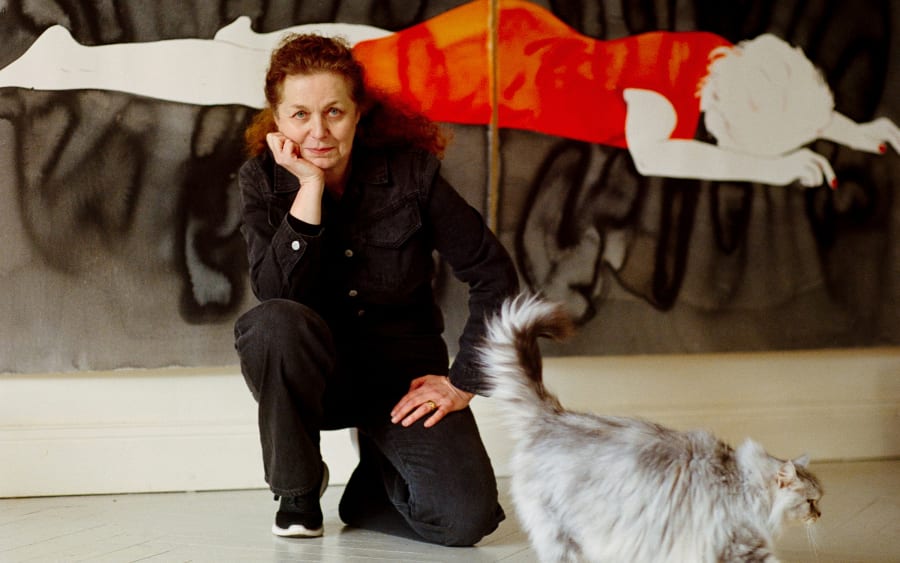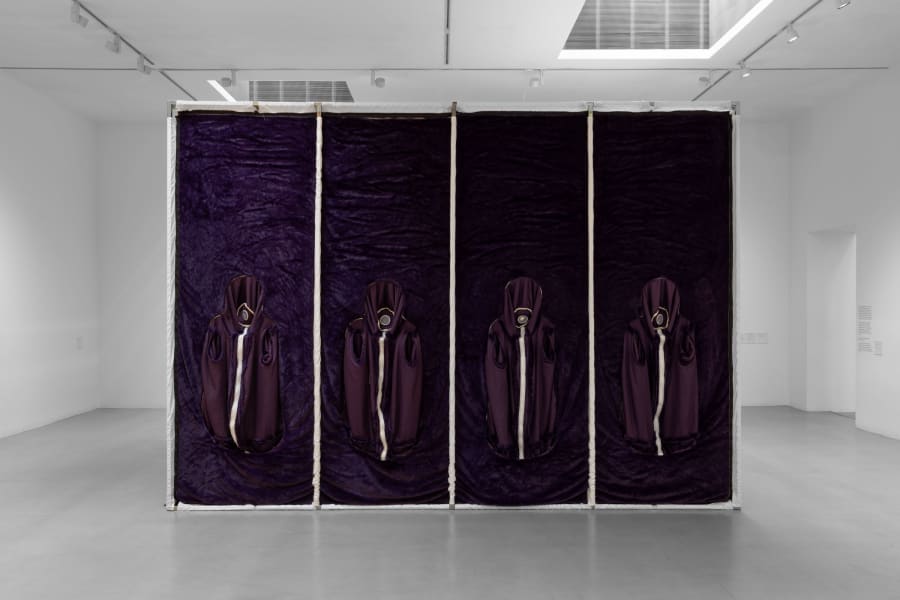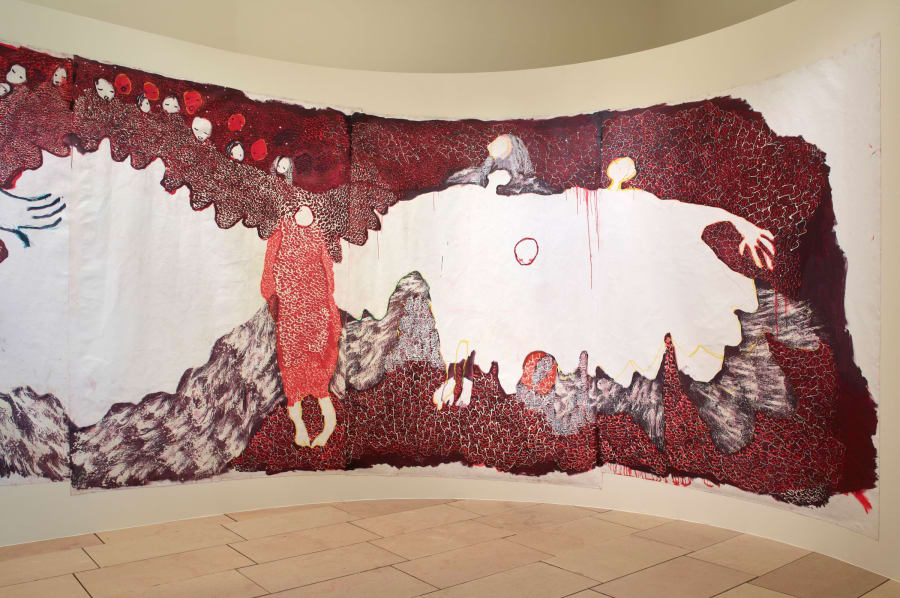‘Music came first for me – drums, percussion…That was my first artistic experience, though I wouldn’t have called it that then. Embracing the identity of an artist took time. I was reserved, hesitant. For me, music was all about community, rooted in the Caribbean carnival traditions of Mas – a term that refers both to the masks and costumes worn by participants and parading groups. For over two years, I was part of a carnival group in the Paris suburbs. When I got into art school, I had to make a choice and I decided to focus on visual art. But that collective dimension quickly resurfaced in my painting. I left traditional canvases behind for textiles – banners, flags, capes, costumes…I became interested in how art could exist beyond the white cube. What happens when a painting becomes wearable, something you can take to the streets, that activates in public space? Today, these are the questions driving my work as I create textile pieces for performance.
‘Back in Guadeloupe, my family includes active members of Akiyo, a musical group and cultural movement that spearheaded the revival of carnival identity in the late 1970s and remains politically engaged today. My Italian father, meanwhile, organized concerts. From backstage, where I’d hang out as a kid – sometimes until 3am – I watched jazz musicians. They were often American and sometimes struggling, but on stage they would find total artistic freedom through improvisation. Those experiences shaped my view of what it means to be an artist – a figure I probably romanticized. Becoming one felt like a calling, a natural progression.
‘At art school, I chose painting, inspired by figures including Robert Rauschenberg and Andy Warhol, who experimented with photographic images and canvas. I was drawn to printmaking, especially screen printing – bold, frontal aesthetics that borrowed from poster art. Back then – and since my high school days – I was heavily involved in activism in Saint-Denis, in the northern suburbs of Paris, where my studio is now. I helped organize rallies and concerts with other students. We successfully campaigned to rename a street after the African American journalist and activist Mumia Abu-Jamal. That led me to the United States, where I met Abu-Jamal in Pittsburgh while he was on death row. I was 20 years-old at the time, and the experience marked me for life. Activism introduced me to working with printed images and paint – creating banners, posters, and flyers. The goal was to produce striking visuals that would grab the attention of passersby. That activist impulse still informs my painting; I’m always chasing that same visual impact.
‘Since my first trip to the US, two artists have been foundational to my work. First, Romare Bearden, whom I discovered by chance via a discounted book in the bookstore at the Whitney Museum of American Art in New York. His collages struck me deeply, especially the series “Black Odyssey” [1977] and his Harlem street scenes. I started combing New York, searching for his work. I was profoundly moved by his ability to turn pictorial space into narratives that were anchored in history. I also love how his painting morphs into dreamlike spaces. That’s what I’m trying to do now for my Palais de Tokyo show.
‘Around the same time, I also discovered Sam Gilliam, a pioneer of Postwar abstract painting who brought a theatrical dimension to canvas by giving it volume. Gilliam holds a unique place as one of the few African American artists in the abstract movement, who rose to fame in the ’60s, before being sidelined for a time. He’s a towering figure who never sacrificed his political edge, despite his abstract language. His theatricality, his commitment, and his radical approach to presenting painting left a lasting impression on me. Bearden and Gilliam are, in a way, my artistic roots.
‘I feel my painting requires momentum. It comes alive in its engagement with space, through performance, and most of all, through collaboration. My work needs to expand, to physically inhabit spaces – like it did in my Panthéon exhibition. That project was a kind of exorcism, an alternative pantheon. Politically, I couldn’t imagine responding alone to an invitation to address slavery. It was crucial that Caribbean society claim that space with me. Beyond the artistic performance, Mas fulfills its political and activist traditions within this project.
‘As my work grows, so does my need to collaborate with others. My first banners were terribly sewn – which was almost part of their charm. My assistants aren’t art school graduates but fashion school alumni. They handle the sewing and dyeing, freeing me up to focus on painting, collage, and screen printing. They teach me as much as I teach them. The exchange is mutual.’
Raphaël Barontini is represented by Mariane Ibrahim (Chicago, Mexico City, Paris).
Raphaël Barontini
‘Somewhere in the Night, the People Dance’
From February 21 to May 11, 2025
Palais de Tokyo, Paris
Caroline Honorien is an independent art critic and editor based in Paris.
Top image: Raphaël Barontini in his studio in Saint Denis, December 2024. Photography by Bettina Pittaluga for Art Basel.


